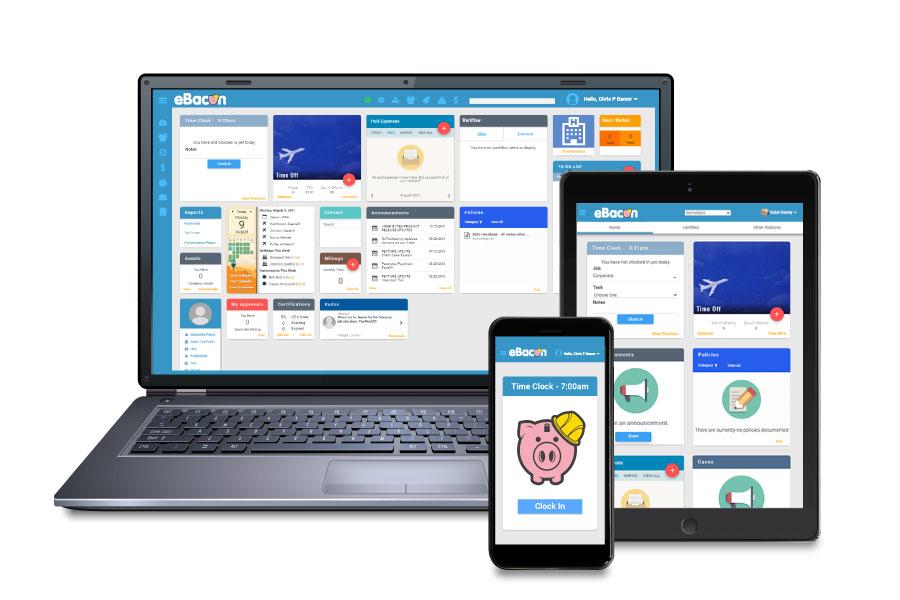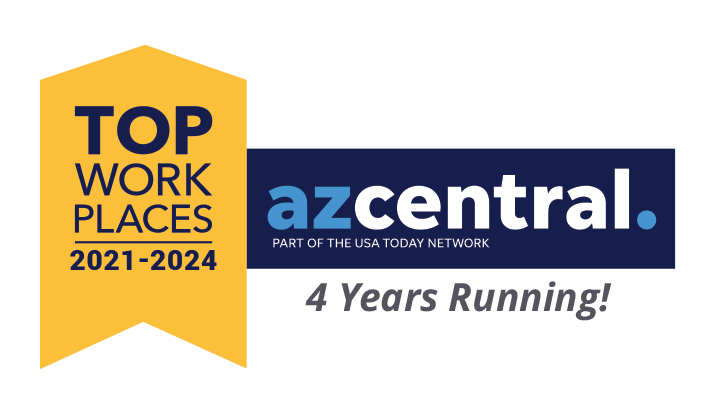Construction companies that pay fringe benefits in cash are giving up tens of thousands of dollars every year, maybe more. While Davis-Bacon and Related Acts require you to pay prevailing wages and fringe benefits, you can handle fringes through either cash or a bona fide fringe benefit fund plan or program. Paying fringe benefits in cash is administratively simple, which is why so many contractors do it. Unfortunately, it is also the most expensive way to handle fringes because it results in higher taxes and the overpayment of fringe benefits. As a result, many contractors and subcontractors are wasting a lot of money that could be saved and used to grow their businesses.
Let’s look at how paying fringe benefits in cash costs you and what you can do about it.

What are Fringe Benefits in Construction?
Federally funded construction projects must abide by additional rules and regulations, including Davis-Bacon and Related Acts. Under Davis Bacon, laborers, and mechanics must be paid no less than locally prevailing wages and fringe benefits for corresponding work on similar projects in the area. These rates are set by the Department of Labor including how much is required in fringe benefits.Fringe benefits Definitions
- Contributions irrevocably made to a trustee or third party under a bona fide fringe benefit fund plan or program.
- The rate of costs incurred in providing bona fide fringe benefits with an enforceable commitment to carry out a financially responsible plan or program, which was communicated to the employees in writing.
- Life insurance
- Health insurance
- Pension
- Vacation
- Holidays
- Sick leave
- Other “bona fide” fringe benefits

Hidden Costs of Paying Fringe Benefits in Cash
Do you have an existing benefits package that includes health, life, or vacation pay? Most contractors are already paying for benefits in some type of benefits package. Some of these benefits may count as fringe benefits under Davis-Bacon. So if you are already paying for existing benefits that count as fringes, and are also paying the full amount of required fringes in cash, you’re overpaying. This can add up over time, especially if you have a larger workforce or frequently work on government projects.Payroll Tax Monitoring
When fringes are paid in cash the entire amount is subject to payroll taxes — including Federal Insurance Contributions Act (FICA) and Federal Unemployment Tax Act (FUTA) taxes, as well as state unemployment taxes and workers’ compensation. This can be a significant payroll expense that could be avoided if fringe benefits were handled differently. For instance, if you paid those fringe benefit payments into a qualifying 401(k) you could save a considerable amount every pay period because it would be exempt from annualization. Overpaying for fringe benefits and missing out on tax savings can add up to staggering amounts of money being lost every single payday, even if your company only does 10-15% prevailing wage work.Why Do Contractors Pay Fringe in Cash?
If paying fringe benefits in cash is more expensive, why would anyone do it? Companies that take this path understand the financial and legal risks associated with not complying with prevailing wage labor laws like Davis Bacon. Paying fringe benefits is the easiest way to comply with the law and stay out of trouble. You don’t have to do any calculations or worry about what does or does not count. As long as you pay the correct fringe rate for every work classification on a project, you’re good. Paying fringe benefits in cash is also seen as an easy way to deal with the annualization requirement. This requirement makes employers average out contributions to benefit plans based on the overall number of each employee’s hours worked for the whole year, including work done on private jobs. This ensures that contractors do not take credit for fringe benefits provided on public works projects to subsidize their private jobs.Exempted Benefits
This can be complicated and manage, so to avoid dealing with annualization contractors select methods of handling fringe benefits that are exempt from annualization:- Cash payments
- Cash payment through Sec 125(cafeteria plan)
- Contributing fringe benefits to a retirement plan that has immediate vesting
- Employer contributions to an HSA
Bonafide Trusts
Bona fide trusts such as 401(k)s, section 125 cafeteria plans, or health savings accounts (HSA)s can be a great way to meet your fringe requirements but are sometimes seen as complicated to set up and manage. Cash is simple to manage and easy to ensure compliance, making it an attractive solution even though it costs more in the long run. Last but not least, contractors opt to pay fringe benefits in cash because most payroll software is inadequate for the unique needs of the construction industry. To avoid overpaying fringe benefits, your system needs to help you “take credit” for benefits you’re already providing that can count toward fringe benefits. It also has to reduce your fringe obligation accordingly, accounting for every cent correctly. Since there are serious consequences for making mistakes and few payroll software choices to help, contractors go the safe, simple but expensive route and pay fringes in cash.
How to Save Money on Fringe Benefit Payments
Paying fringe benefits is mandatory, but that doesn’t mean you don’t have options. The law allows you to pay fringes through irrevocable contributions to a trustee, bona fide fringe benefit plan, or by providing bona fide fringe benefits according to an enforceable commitment to carry out a financially responsible plan or program, which was communicated to the employees in writing. This is where taking credit for the benefits you already provide comes into the picture. Let’s take a closer look at how you can save money on fringe benefit payments and stay compliant with all prevailing laws at the same time.Alternatives to Paying Fringe Benefits in Cash
The best way to save money on fringe benefits is to stop paying them in cash. Bona fide trusts such as 401(k)s, section 125 cafeteria plans, or health savings accounts (HSA)s can be a great way to meet your fringe requirements. Unlike cash payments, contributions to these types of financial instruments are exempt from annualization, workers’ compensation, federal, and state unemployment taxes. Just make sure you select a qualifying plan that is completely compliant with all applicable laws, including:- Employee Retirement Income Security Act (ERISA)
- Internal Revenue Service rules and regulations outlined in Section 401(k)
- Davis-Bacon and Related Act regulations
Overcoming Objections When Moving from Cash Fringe Benefits
If your workers are used to their fringe benefits being paid in cash on payday, putting them into a 401(k) might be problematic. The main objection typically comes down to access. Employees often consider fringe benefits as part of their hourly pay rate. Since most 401 (k) or fringe trusts don’t allow employees to easily access the funds, this can be seen as a “pay cut”. Fortunately, there is a way for both employer and employee to win by using a trust to manage fringe benefits. Our fringe trust is a unique option that allows employees to choose traditional benefits like health, FSA, or a 401 K plan or they can have the money distributed via direct deposit or to a pay card each week. This provides companies with all of the benefits of using a traditional trust while providing employees the flexibility they demand when it comes to their fringe benefit payments. Workers can get their fringe in cash on payday like they do now or they can save it for the future, and your company still gets serious savings in payroll taxes.Take Credit for Allowable Benefits Already Provided
Many companies don’t take credit for the benefits they could count toward fringe because of the added time, complication, and risk. This is where your payroll processes come into the picture. Most payroll software is sufficient to handle the basics of paying employees and reporting, but insufficient to deal with the elevated needs of government contractors. Certified payroll software can make payroll and compliance easier by providing tools to solve specific prevailing wage problems. This may include more accurate time and work classification tracking, wage determination verification, red flags for underpaying against prevailing wages, enhanced fringe management, compliance reporting, and simplified wage restitution. It must have the ability to help you maximize the credit you take for allowable benefits against required fringe benefits so your company saves money while staying compliant.
This may include more accurate time and work classification tracking, wage determination verification, red flags for underpaying against prevailing wages, enhanced fringe management, compliance reporting, and simplified wage restitution. It must have the ability to help you maximize the credit you take for allowable benefits against required fringe benefits so your company saves money while staying compliant.
Construction Payroll Software Solves Fringe Benefits Issues
Using construction payroll software can also save your company lots of admin time, risk, and money, which makes the initial pain of switching payroll software well worth the trouble. While not every certified payroll software offers the same benefits, there are some significant advantages to be had by switching from general payroll software to certified payroll software.- Increased overall payroll accuracy
- Simplified reporting, including Davis-Bacon and state prevailing wage reports
- Enhanced time and attendance functions to track changing work classifications
- More efficient payroll process
- The ability to take credit for fringe benefits as allowed, reducing the overall fringe expense
It is important to find a robust payroll, compliance, and fringe benefits platform that understands the industry, the law, and your business needs. is on your side. Learn more about our comprehensive platform for managing all aspects of your certified payroll compliance process and check out these additional resources:
Software and process implementation tips How to select payroll software for your company Four ways to make construction payroll easierThe material presented here is educational in nature and is not intended to be, nor should be relied upon, as legal or financial advice. Please consult with an attorney or financial professional for advice.









